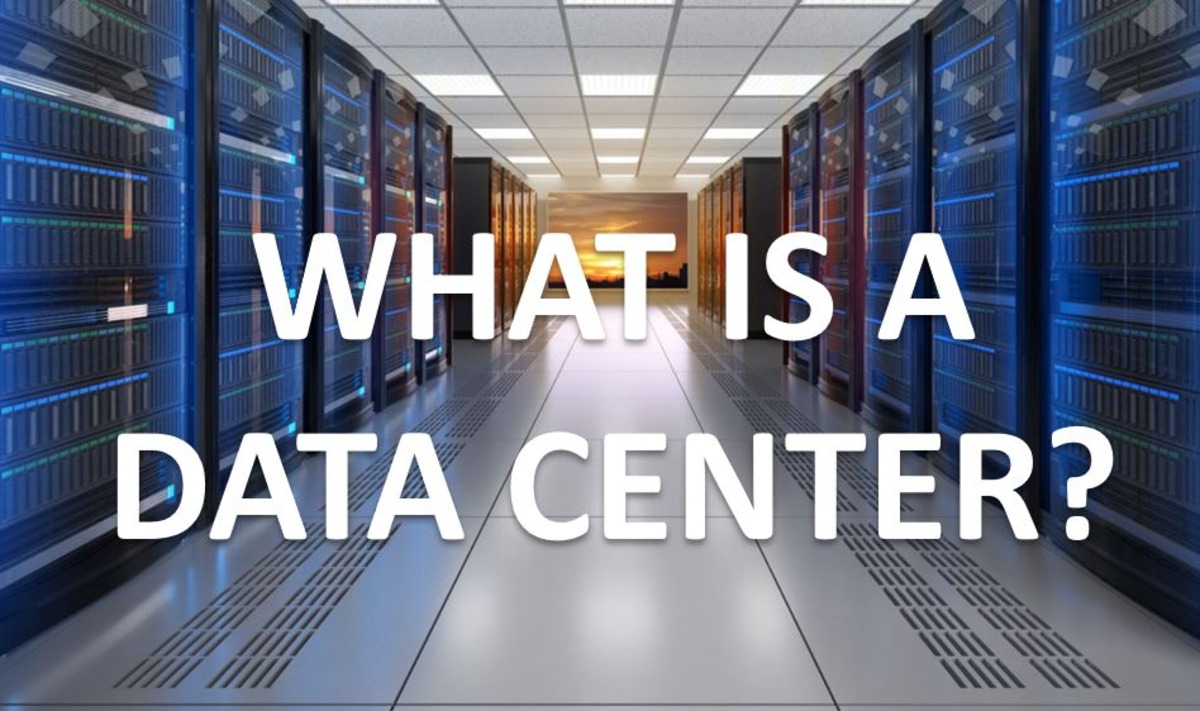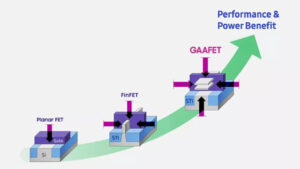Introduction
In today’s interconnected world, data center are the unsung heroes powering our digital lives. From streaming services and social media to cloud computing and artificial intelligence, these facilities house the essential infrastructure that keeps our digital ecosystem running smoothly.
As the demand for data storage and processing continues to skyrocket, data centers have become the backbone of the 21st-century digital age, enabling advancements and innovations that shape our daily experiences and drive economic growth.
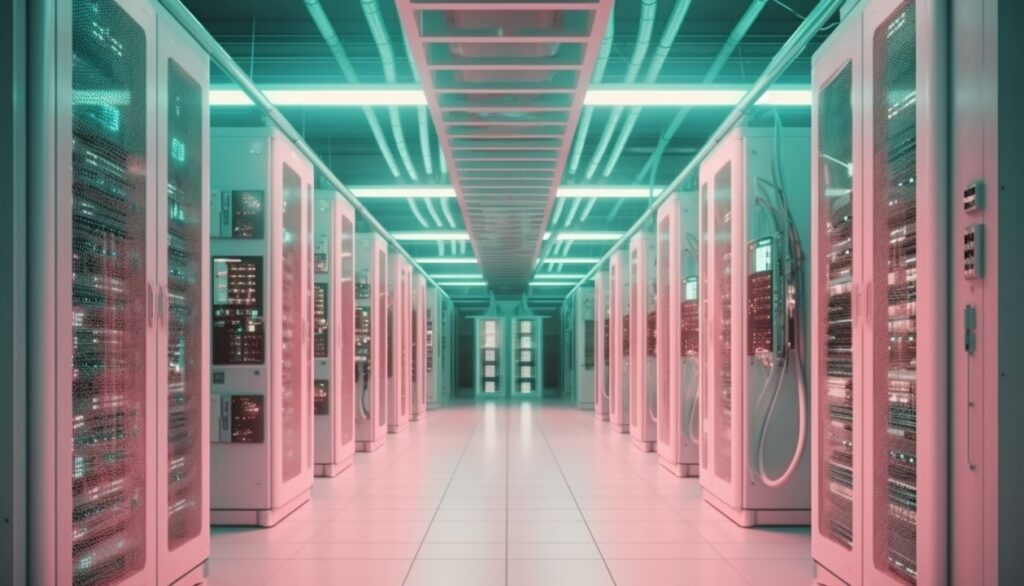
Imagine a data center as a giant library for the digital age. Here’s the comparison:
Information storage: Just like a library holds books and other forms of information, a data center stores vast amounts of digital data. This data can include everything from emails and social media posts to business records and financial information.
Organization: Libraries have sophisticated systems for organizing books by category and author. Similarly, data centers use complex software to organize and store digital information efficiently. This makes it easy to find and retrieve specific data when needed.
Security: Libraries have security measures to protect their collections from theft and damage. Data centers also have robust security systems to safeguard sensitive information from unauthorized access or cyberattacks.
Climate control: Libraries maintain a specific temperature and humidity level to preserve their collections. Likewise, data centers have climate control systems to keep computer systems cool and prevent overheating.
Overall, both libraries and data centers are essential for storing and protecting valuable information.
What is a Data Center?
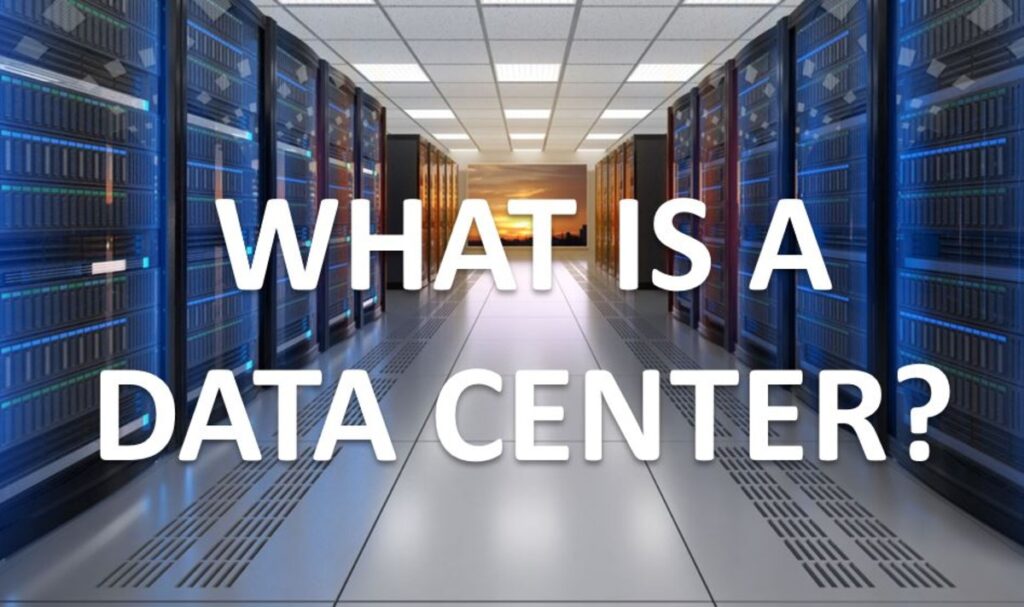
In the simplest terms, a data center is a dedicated facility designed to house computer systems and associated components such as telecommunications and storage systems. These facilities contain everything from powerful servers to networking equipment and data storage devices, all working together to ensure the smooth functioning of digital operations. Data centers are the central hubs where organizations store, manage, and disseminate data and applications.
A data center is the behind-the-scenes powerhouse of the digital world. Here’s a breakdown of its functions:
Housing Critical Infrastructure: Imagine a data center as a giant warehouse for computer equipment. It stores servers, storage devices, networking gear, and other essential components that make the internet and various online services run.
Data Storage and Management: This is where all our digital stuff lives! Emails, social media posts, photos, videos, and business documents – data centers store massive amounts of information. They also have sophisticated systems to organize, manage, and retrieve this data efficiently.
Running Applications: Many of the applications we use daily, like web browsing, online banking, or streaming services, rely on data centers. These centers house the servers that run these applications, allowing us to access them from anywhere with an internet connection.
Providing Processing Power: Data centers hold a lot of computing muscle. They provide the processing power needed for complex tasks like scientific research, data analysis, and artificial intelligence.
In short, data centers are the backbone of our digital lives. They keep our information safe, run the applications we rely on, and provide the processing power for many of today’s technological advancements.
Follow us on Linkedin for everything around Semiconductors & AI
The Anatomy of a Data Center
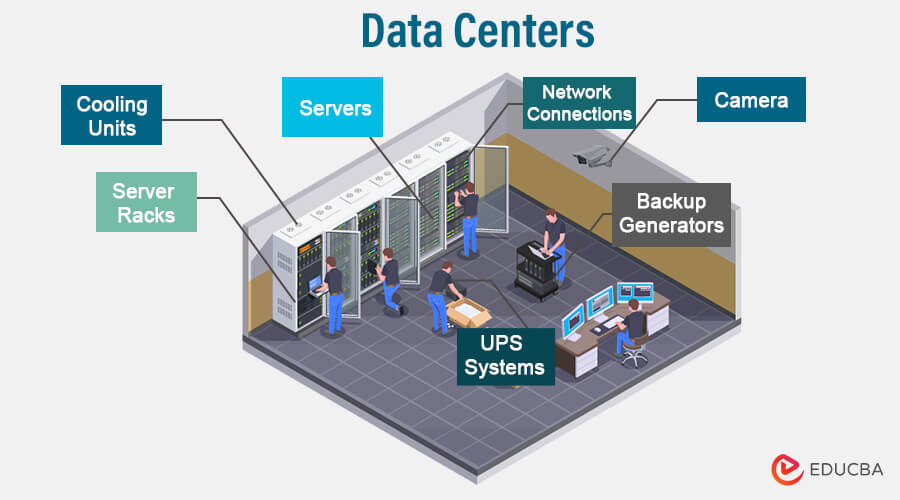
Data centers are built with several critical components to ensure their efficiency and reliability:
Servers: These are the core machines that process and store data.
Storage Systems: Devices and technologies that store vast amounts of data securely.
Networking Equipment: Routers, switches, and other equipment that ensure data flows smoothly between devices.
Power Supply: Redundant and backup power systems, including generators, to keep operations running without interruption.
Cooling Systems: Essential to prevent overheating of hardware.
Security Systems: Both physical and digital security measures to protect sensitive data.
A Real life Example:
Consider your daily dose of online shopping. When you browse a retail website, say for that new pair of shoes you’ve been eyeing, several data center functions come into play:
Data Storage: The product information, images, customer reviews, and even your shopping cart details are all stored in a data center.
Application Running: The website you’re browsing runs on servers housed in a data center. These servers manage everything you see and interact with on the website.
Processing Power: As you search for shoes, filter by size, or add items to your cart, the data center’s processing power handles these actions behind the scenes.
Secure Transactions: When you enter your payment information to purchase those shoes, data centers play a crucial role in encrypting and securely transmitting that data to prevent fraud.
So, from browsing the selection to securely finalizing your purchase, data centers are silently working in the background to make your online shopping experience possible.
Why Data Centers are Essential in the 21st Century
The Digital Transformation
The 21st century has witnessed a profound digital transformation across all sectors, driven by advancements in technology and the internet. Data centers are at the heart of this transformation, enabling businesses and individuals to operate in a connected, data-driven world. From cloud computing and big data analytics to artificial intelligence and the Internet of Things (IoT), data centers support a wide array of modern technologies and services.
Read More: $445 Million in Damages: Jury Slaps Micron in Patent Trial Against Netlist – techovedas
The Surge in Data Generation
Every day, the world generates an enormous amount of data—over 2.5 quintillion bytes. This data comes from various sources, including social media, e-commerce, streaming services, and smart devices. Data centers provide the infrastructure to store, process, and analyze this data efficiently. Without data centers, managing and utilizing such vast amounts of data would be impossible.
Supporting Remote Work and Digital Services
The COVID-19 pandemic accelerated the shift towards remote work and digital services. Data centers have been critical in this transition, supporting remote collaboration tools, virtual meetings, and online education. They ensure that businesses can continue to operate smoothly, even when physical offices are closed.
The Role of Data Centers in Business Operations
Ensuring Business Continuity
Data centers offer redundancy and disaster recovery solutions to ensure business continuity. With robust backup systems and failover mechanisms, they protect organizations from data loss and downtime. This reliability is crucial for businesses that rely on continuous access to their data and applications.
Enhancing Security
With the rise of cyber threats, data centers provide advanced security measures to protect sensitive information. They employ sophisticated firewalls, encryption technologies, and physical security controls to safeguard data from breaches and unauthorized access.
Cost Efficiency and Scalability
For many organizations, building and maintaining their own data centers is cost-prohibitive. Instead, they rely on third-party data centers or cloud services, which offer scalable and cost-efficient solutions. These facilities can scale up or down based on demand, providing flexibility and reducing the need for significant capital investment.
Read More: $47.5 Billion : China Launches Big Fund III With Aims to Chip Away at US Dominance – techovedas
The Global Impact of Data Centers
Economic Contributions
Data centers contribute significantly to the global economy. They create jobs, stimulate technological innovation, and drive economic growth. Major tech companies are investing heavily in data center infrastructure, further boosting economic development.
Enhancing Connectivity
Data centers are pivotal in enhancing global connectivity. They facilitate fast and reliable internet connections, enabling seamless communication and collaboration across borders. This connectivity is essential for the globalized economy and the spread of information and innovation.
Conclusion
In conclusion, data centers are the unsung heroes of the digital age. They provide the critical infrastructure needed to support our increasingly digital lives. From enabling cloud computing and big data analytics to ensuring business continuity and enhancing security, data centers are indispensable. As technology continues to evolve, the importance of data centers will only grow, making them a cornerstone of the 21st-century economy.

